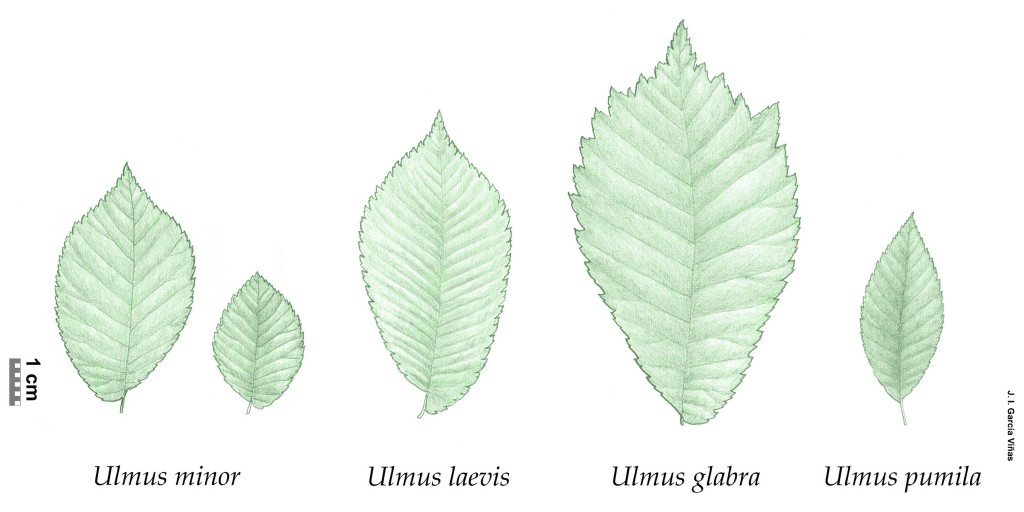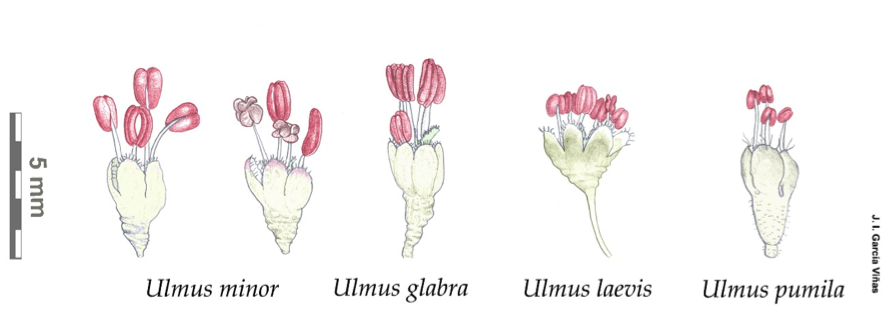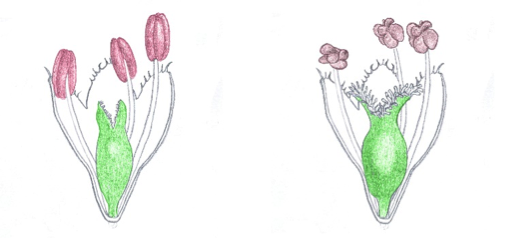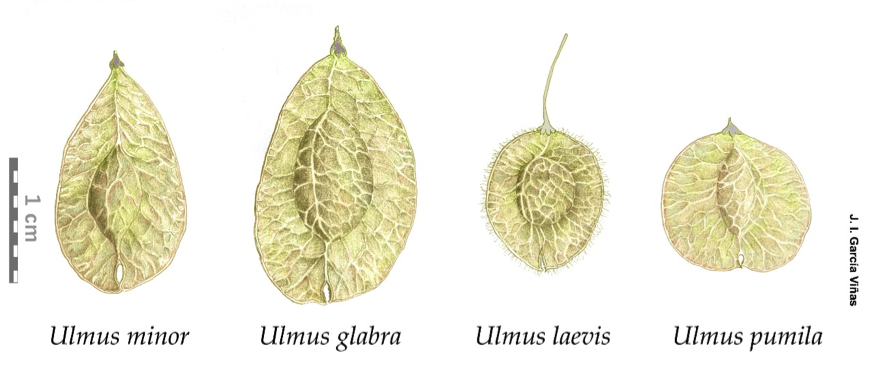Bienvenid@ a la web del Proyecto Life+ Olmos Vivos, donde puedes encontrar toda la información relativa al proyecto.
El Género Ulmus
The genus Ulmus
This genus gathers 20-45 species according to different authors’ classifications. They spread over Eurasia and North America. In Spain, there are three authoctonous species and an exotic one, Ulmus pumila, that presents a moderate degree of ferality. Elms share the following characteristics:
They are deciduous trees that can reach 15-20 m in height. Some species and individuals can reach 2 m in diameter.
Twigs are thin (~2-3 mm) and pubescent. From the end of summer, their buds can be observed; they are small (< 3-4 mm), brownish, ovoid, with some ombricate scares and mor or less densely wooly.
Leaves are alternate, emerging in a plane (two-ranked); simple, mostly with a short petiole (< 12 mm) and deciduous stipules. The leaf blade is one of the most outstanding elements: long, egg-shaped, with plenty of secondary nerves, more or less straight, showing separated arrangement. The margin is double serrated and the base is asymmetric (one side more developed than the other, Fig. 1) and a long apex. Due to their physiognomy it is not uncommon to mistake elms with the hazelnut (Corylus avellana) and even, sometimes, with the limetree (Tilia sp.).
Flowers emerge in globular clusters of fascicles arising at the end of winter before the leaves sprout. They are small and not attractive, bisexual and occasionally unisexual due to abortion, especially of the female organs. They show a cone-shaped calyx ending in a series of lobes. The inside part contains some stamens (androecium) with anthers standing above the calyx, and a tiny pistil (gynoecium) with two long stigmatic appendices, usually feathery (Fig. 2).
Male and female maturation is not simultaneous: generally stamens anticipate the pistil (Fig. 3).
Fruits show other of the most identificative features of the genus. They are small, dry when mature, papyraceous and round or ovoid-shaped (Fig. 4), with a very compressed seed surrounded by a wing (samara) with a buttonhole-shaped notch in the upper end.
Seeds have no external reserve tissues and the whole space is occupied by the embryo. Their size, shape and other details are variable among species.










